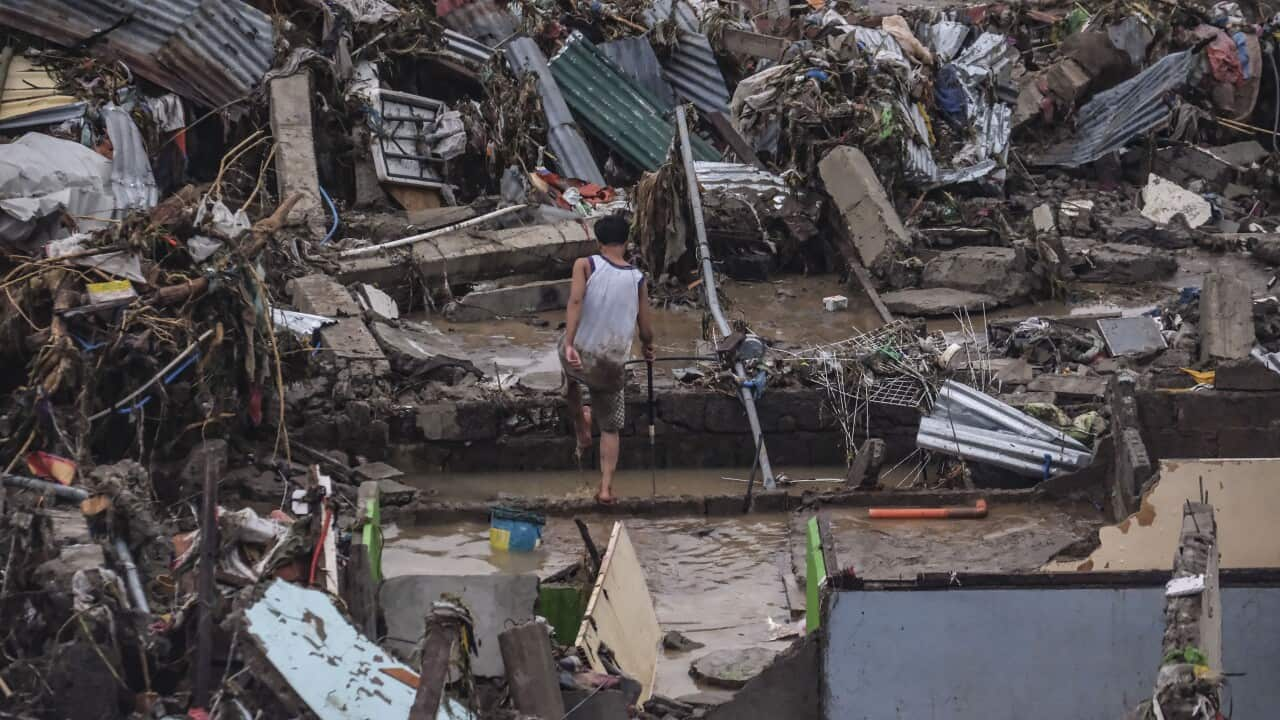The death toll from Typhoon Kalmaegi in the Philippines has climbed past 90 as the devastating impact on hard-hit Cebu province became clearer after the worst flooding in recent memory.
Floodwaters described as unprecedented had rushed through the province's towns and cities a day earlier, sweeping away cars, riverside shanties and even massive shipping containers.
On Wednesday, Cebu spokesman Rhon Ramos told Agence France-Presse that 35 bodies had been recovered from flooded areas of Liloan, a town that is part of provincial capital Cebu City's metro area.
The grim news brought the toll for Cebu to 76. Earlier in the day, national civil defence deputy administrator Rafaelito Alejandro confirmed at least 17 deaths in other provinces.
"It was the major cities that got hit (with floods), highly urbanised areas," Alejandro said in an interview with local radio, adding that 26 people remained missing.

Photos and videos from the Philippine Red Cross show rescue workers wading through knee-deep floodwaters in Cebu City, using boats to reach stranded residents. Source: Getty / Anadolu
Run of disasters in the Philippines
The Philippines, which is hit by an average of 20 tropical storms each year, is recovering from a run of disasters, including earthquakes and severe weather events in recent months.
In September, Typhoon Ragasa swept across northern Luzon, forcing schools and government offices to shut down as it brought fierce winds and torrential rain.
Although Kalmaegi, locally named Tino, has gradually lost strength since making landfall early on Tuesday, it continued to lash the country with winds of 120km/h and gusts of 165km/h as it swept across the Visayas islands headed for northern Palawan and towards the South China Sea.
Tens of thousands were evacuated across the Visayas region, including parts of southern Luzon and northern Mindanao, ahead of a storm that submerged homes and caused widespread flooding.
Scientists warn that storms are becoming more powerful due to human-driven climate change. Warmer oceans allow typhoons to strengthen rapidly, and a warmer atmosphere holds more moisture, meaning heavier rainfall.
In total, nearly 400,000 people were pre-emptively moved from the typhoon's path.
'The waters kept rising'
Verified videos circulating on social media showed cars and streets underwater, with some vehicles carried away in the flow.
"We were really anxious because the longer the rains continued, the higher the floodwaters rose," said John Patajo, a housekeeper in the area.
"When the waters rose, we went to our second floor. Yet, the waters kept rising, so we decided to head up to our roof."
The typhoon was expected to leave the Philippines late on Wednesday or early Thursday.
State weather agency PAGASA had earlier warned of a high risk of "life-threatening and damaging storm surges" that could reach more than 3 metres high on coastal and low-lying communities in the central Philippines.
Military helicopter crash
The Philippine military confirmed on Tuesday that a helicopter, one of four deployed to assist typhoon relief efforts, had crashed on northern Mindanao island.
The Super Huey helicopter went down while en route to the coastal city of Butuan "in support of relief operations" related to the powerful storm, Eastern Mindanao Command said in a statement.
Hours later, air force spokeswoman Colonel Maria Christina Basco said the remains of six people had been recovered by troops.
"We're waiting to confirm the identities via forensics in order to ascertain their identities," she told reporters, saying two pilots and four crew members were on board.
Share


